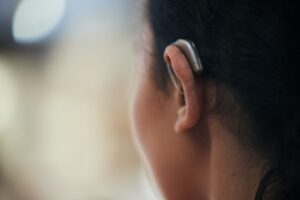Understanding Auditory Conditions Among Veterans
The auditory system—including your outer, middle, and inner ears—enables hearing and balance. For many veterans, particularly those exposed to constant loud noises (e.g., firearms, artillery, aviation engines during service), hearing problems or persistent ear ringing (tinnitus) often result from this hazardous environment.
Accurate, thorough medical documentation provides the foundation for clearly communicating these conditions during VA evaluations. This guide clearly outlines what evidence is necessary and helpful.
Common Auditory Conditions & Medical Documentation Needed
The VA evaluates auditory conditions under the Impairment of Auditory Acuity (38 CFR Part 4, Subpart B, Diagnostic Codes 6100–6260). Key examples include:
Hearing Loss (Sensorineural, Conductive, Mixed)
Medical Evidence Needed:
- Audiometric examination results clearly documenting pure-tone thresholds (500Hz, 1000Hz, 2000Hz, 3000Hz, and 4000Hz). · Speech discrimination scores using Maryland CNC testing.
- Clear diagnosis type specified by an audiologist or otolaryngologist (ENT specialist).
- Description of functional impacts (e.g., difficulty in conversations and communication environments).
Tinnitus
Medical Evidence Needed:
- Clear onset description (when tinnitus began, circumstances or noise exposure involved).
- Characterization (ringing, buzzing, humming), frequency (constant or intermittent), and severity.
- Impact statements (e.g., interference with sleep, concentration, communication). Related Guide: VA Disability for Tinnitus: Understanding Your Benefits Journey
Meniere’s Disease and Vertigo-Related Disorders
Medical Evidence Needed:
- ENT diagnosis clearly documenting dizziness, hearing loss fluctuations, tinnitus, and episodes of vertigo.
- Vestibular function testing (e.g., VNG/ENG) results detailing balance impairment.
- Documentation outlining episode frequency, severity, duration, and effects on daily function.

Essential Medical Evidence Checklist
The following elements provide the basis of comprehensive medical documentation:
- Official audiometric test results (Audiograms).
- Complete diagnosis including ICD-10 codes clearly identified.
- Supporting ENT or audiologist evaluations.
- Statements clearly describing how the auditory condition affects daily life.
- Medical records clearly documenting noise exposure during military service.
- Detailed accounts of balance problems or vertigo if applicable.
- Information on the use of hearing aids or other assistive devices and their necessity.
Common Secondary Conditions Related to Hearing & Tinnitus
Auditory impairments frequently relate to or aggravate additional health conditions:
- Mental Health Issues: Anxiety, depression, isolation, or sleep problems related directly to hearing impairment or chronic tinnitus.
- Balance Disorders: Inner ear damage linked to hearing loss may lead to balance problems, dizziness, and vertigo.
- Chronic Headaches: Often associated with severe tinnitus or inner ear disorders.
- Cognitive Impairment: Chronic auditory impairment may intensify cognitive difficulties because increased effort is needed to process sounds.
Examples: Vague vs. Strong Medical Documentation
Less helpful documentation:
“Patient complains of trouble hearing and ringing in ears. Recommend audiological follow-up.”
Much stronger documentation:
“Veteran reports persistent bilateral tinnitus, described consistently as pronounced ringing since 2012 following exposure to sustained artillery fire. Recent audiometric assessment dated May 2, 2024, confirms moderate bilateral sensorineural hearing loss, with pure-tone thresholds averaging 55 dB and Maryland CNC speech scores at 78% bilaterally. Patient indicates substantial difficulty comprehending speech in crowded environments, significantly impacting daily communication and requiring amplified telephone use. Tinnitus significantly disrupts sleep, contributes to irritability, and requires white noise devices at night.”
Clearly Documenting Secondary Conditions
Secondary health conditions connected to auditory impairments must also be documented clearly:
- Mental Health Related Documentation: Clearly detail connections between tinnitus/hearing loss and increased anxiety, depression, or sleep disturbances. Psychiatric evaluations and therapy notes validating these connections strengthen documentation.
- Balance and Vestibular Symptoms Documentation: Document vestibular testing results clearly linking balance symptoms to ear damage. Clearly detail incidents triggering dizziness or vertigo, including frequency and severity.
Questions to Ask Your Medical Provider
Careful and precise medical histories may enhance the accuracy of your condition evaluation. These questions can help with detailed documentation:
- “Could you document my hearing thresholds at required frequencies, clearly identifying where comprehension difficulties begin?”
- “Can my speech discrimination and clarity in different scenarios (quiet rooms, loud environments, conversations) be clearly detailed in my records?”
- “Could you specifically record how my tinnitus affects daily routines including sleep and communication?”
- “Can you clearly describe the medical necessity and effectiveness of my hearing aids or other assistive technologies?”

Normal Hearing Levels Reference Chart
A guide to audiogram limits by decibels interpreted for practical understanding:
| Hearing Level | Decibel (dB) Range | Functional Impact |
| Normal | 0–25 dB | Minimal difficulty |
| Mild Loss | 26–40 dB | Difficulty hearing soft conversations |
| Moderate Loss | 41–55 dB | Difficulty during regular conversation |
| Moderately Severe | 56–70 dB | Struggles during loud conversation |
| Severe Loss | 71–90 dB | Only very loud sounds audible |
| Profound Loss | 91+ dB | Most sounds inaudible |
Symptom Tracking Template
Regular tracking can enhance the quality and clarity of your medical documentation:
Date: ____________
Tinnitus Severity (0–10):
Morning: ___ Afternoon: ___ Evening: ___
Character (ringing/buzzing): _______________
Activity Triggering Symptoms: ______________
Sleep Impact (hours lost): ________________
Devices/Coping Methods Used: ______________
Hearing Issues Today:
Communication Challenges Experienced: ___________
Missed verbal information (examples): ____________
Assistive Devices Used (hours): _________________
Quick Medical Terminology Reference
- Audiogram: Graph showing sound detection thresholds.
- Sensorineural Loss: Damage to inner ear/auditory nerve.
- Conductive Loss: Related to outer/middle ear issues.
- Speech Discrimination: Ability to distinguish words clearly.
- Tinnitus: Perception of noise without external source.
- Vertigo: Severe dizziness related to inner ear issues.
Remember: You Have Full Control
For veterans coping with hearing loss and tinnitus, clarity from understanding the VA evaluation criteria and presenting accurate, comprehensive medical documentation is vital. Remember, you have the right to document your condition thoroughly through accurate medical records, allowing you to approach your evaluation process informed and empowered.
Disclaimer:
This guide is purely educational. We do not act as your attorney or VA representative, nor do we determine or guarantee any specific outcome regarding VA benefits. Always consult qualified professionals regarding your individual needs.











